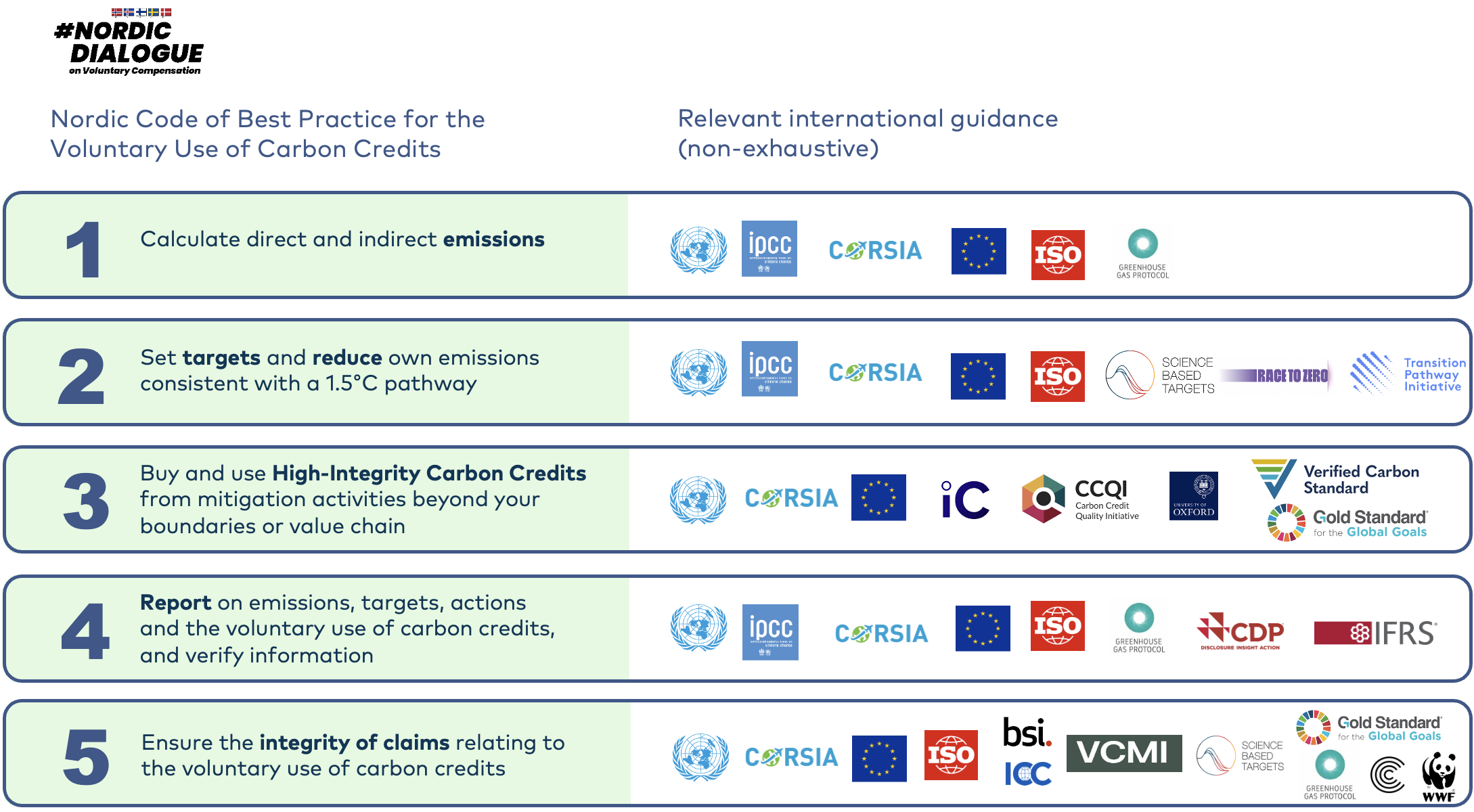2 BEST PRACTICES FOR THE VOLUNTARY CARBON MARKET
This section summarises the key takeaways from the project’s kick-off and final webinars, organised on 16 November 2023 and 11 September 2024, respectively. These webinars provided overviews of the key elements and latest developments in best practice for the voluntary carbon markets. Their recordings are available on the Nordic Dialogue website.
The Nordic Code identified five key elements of best practice for the voluntary use of carbon credits, and high-level principles for each of these elements (see Figure 1). They continue to be as valid and relevant in late 2024 as they were at the time of their publication in late 2022. Meanwhile, the guidance, initiatives and regulation that aim to elaborate and implement these principles continue to evolve, alongside the terminology and narrative relating to the voluntary use of carbon credits.

Figure 1. Key elements of the Nordic Code and relevant international guidance
Many recent recommendations, such as the Finnish guide to good practices for voluntary carbon markets
The case for supporting “beyond value chain mitigation” (BVCM) was strengthened in the spring of 2024 with new guidance from the Science-Based Targets initiative (SBTi) and Gold Standard. This guidance positions BVCM as an essential element of organisations' strategies to contribute to global climate goals and take full responsibility for the emissions they generate. The voluntary purchase of carbon credits is one – but not the only – way to finance BVCM. BVCM claims could include offset and contribution claims. Offset claims convey that the organisation's emissions have been counterbalanced through an equivalent amount of carbon credits. By contrast, contribution claims convey that the organisation has contributed to mitigation, without implying that its emissions have been counterbalanced as a result.
Regarding efforts to promote the consistently high integrity of carbon credits, the Integrity Council for the Voluntary Carbon Market (ICVCM) published its final Core Carbon Principles and assessment framework in late 2023 and started assessing carbon crediting programmes and carbon credit categories against these principles in 2024. In 2024, the EU agreed on a certification framework for carbon removals and carbon farming within the EU. Meanwhile, the operationalisation of the Paris Agreement Crediting Mechanism (PACM) is underway, albeit slowed down by disagreements at the Dubai climate conference in December 2023.
Efforts to safeguard the integrity of claims are also progressing. In late 2023, the International Organization for Standardization (ISO) published the ISO 14068-1 Carbon Neutrality Standard, and the Voluntary Carbon Market Integrity Initiative (VCMI) published its final Claims Code of Practice. In 2024, the VCMI has been developing a proposal for a beta Scope 3 claim for companies that are unable to reduce certain Scope 3 GHG emissions. Meanwhile, the EU has agreed to ban product-level offset claims based on carbon credits and is establishing additional requirements for substantiating and communicating green claims, including offset and contribution claims involving carbon credits.